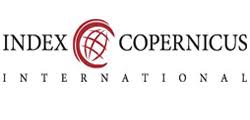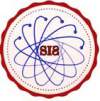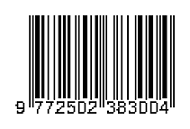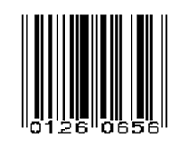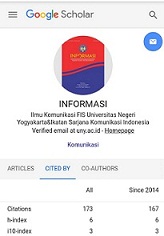MALE GENDER ROLE MESSAGES PADA TOKOH "HERO" DALAM EPISODE "CAHAYA HATI" DI PROGRAM "ZERO TO HERO" METRO TV
DOI:
https://doi.org/10.21831/informasi.v45i1.7768Abstract
AbstractThe research purpose is to determine how the television documentary producer "Zero to Hero" program on Metro TV classify male gender role messages in the cast of "hero" in that program. Researcher used social semiotics method Theo van Leeuwen with multimodal analysis procedure and 24 of male gender role theories from Ian M. Harris, that have been categorized into 5 classification: standard bearers, lovers, workers, bosses and rugged individuals. The result of this study revealed that the television documentary producer "Zero to Hero" program, construct the male gender role messages in the cast of "hero" to the category of male gender role messages consist with standard bearers, lovers, bosses and workers, who shows a positive image and dominant as a man who lived in patriarchal culture in Indonesia.
Abstrak
Tujuanpenelitianiniuntukmengetahui bagaimana produsen program dokumenter televisi "Zero to Hero" di Metro TV mengklasifikasikan male gender role messages pada tokoh "hero" di dalam program tersebut. Peneliti menggunakan metode semiotika sosial Theo van Leeuwen dengan prosedur analisis multimodality dan teori 24 male gender role messages Ian M. Harris yang dikategorikan dalam 5 klasifikasi yaitu standar bearers, lovers, workers, bossesdan rugged individuals. Hasil penelitian ini mengungkapkan bahwa produsen program menampilkan tokoh "hero" dengan kategori male gender rolemessages berupastandar bearers, lovers, bosses dan workers yang menunjukkan citra positif dan dominan sebagaimana layaknya pria berperilaku dalam budaya patriaki di Indonesia.
Keywords: Male Gender Role Messages, Hero, Documentary
References
Burton, Graeme. 2007. Membincangkan Televisi: Sebuah Pengantar Kajian Televisi. Yogyakarta: Jalasutra
Denzin, K. Norman and Yvonna Lincoln. 2000. Handbook of Qualitative Research: Second Edition. UK: Sage
Fairclough, Norman. 1995. Media Discourse. London: Edward Arnold.
Hidayat, Nisa Imawati. 2014. "Konstruksi identitas Punk Muslim Dalam Program Zero To Hero di Metro TV". M.A. Kaján Budayadan Media. UGM. Yogyakarta
Istanto, Ferry H. 1999. "Peran Televisi Dalam Masyarakat Citraan Dewasa Ini Sejarah, Perkembangan dan Pengaruhnya". Nirmana. Vol. 1, No. 2, hlm. 95-108
Jung, C. G., & Franz, M.-L. v. 1964. Man and His Symbols. New York: Doubleday
Martono, John dan Arsita Pinandita. 2009. Punk: Fesyen-Subkultur-Identitas. Yogyakarta: Halilintar Books
Piliang, Yasraf Amir. 1994."Terkurung di Antara Realitas-realitas Semu, Estetika Hiperrealitas & Politik Konsumerisme". Jurnal Ulumul Qur'an. Vol. V.No.4 Pinem, Saroha. 2009. Kesehatan Reproduksi & Kontrasepsi. Jakarta: Trans Media.
Ridwan. 2014. "Male Gender Role Pada Karakter Superhero Dalam Film Produksi Marvel Studios". Jurnal Komunikasi. Vol 2, No. 3, hlm. 1-9
Siregar, Ashadi. 2001. Menyingkap Media Penyiaran: Membaca Televisi, Melihat Radio. Yogyakarta: LP3Y
Synnott, Anthony. 1940. Re-Thinking Men Heroes, Villains and Victims. UK & USA: Ashgate Publishing, Co
Van Leeuwen, Theo. 2005. Introducing Social Semiotics. New York: Routledge
Wibowo, Heru Paul. 2012. Masa Depan Kemanusiaan: Superhero Dalam Pop Culture. Jakarta: LP3ES
Downloads
Published
Issue
Section
License
Authors who publish with this journal agree to the following terms:- Authors retain copyright and grant the journal right of first publication with the work simultaneously licensed under a Creative Commons Attribution License that allows others to share the work with an acknowledgement of the work's authorship and initial publication in this journal.
- Authors are able to enter into separate, additional contractual arrangements for the non-exclusive distribution of the journal's published version of the work (e.g., post it to an institutional repository or publish it in a book), with an acknowledgement of its initial publication in this journal.
- Authors are permitted and encouraged to post their work online (e.g., in institutional repositories or on their website) prior to and during the submission process, as it can lead to productive exchanges, as well as earlier and greater citation of published work (See The Effect of Open Access).


